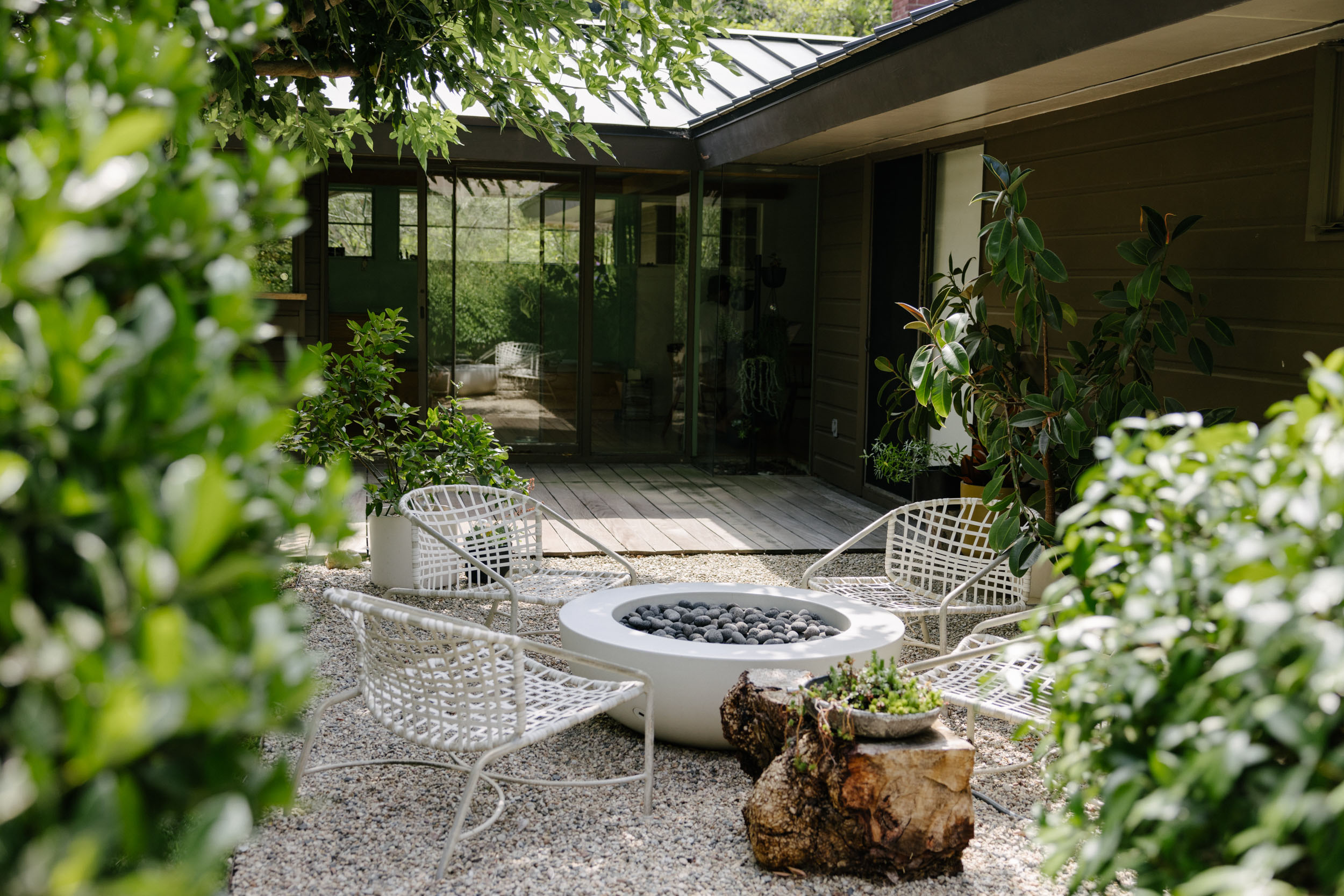Photographs Jessica Sample
Fastened to the front door of Geoff McFetridge’s house is a tiny green-painted woodpecker that, when you pull on its red string, makes a pecking noise with its beak against a hollow wooden base. “I took a trip to Japan with my daughter and we found this hilarious store that was full of awesome ‘Handmade in Japan’ stuff,” McFetridge says. “One of their specialities was that woodpecker, which makes such a beautiful sound. The first thing we did when we bought the house was disconnect the doorbell.”
McFetridge, a celebrated visual artist, has had solo shows of his paintings across the US, Europe and Japan. He’s created work for major brands from Apple to Hermès, and collaborated with filmmakers including Sofia Coppola and Spike Jonze. When he welcomes me into his home, he is a picture of relaxed Californian style: barefoot, wearing a white T-shirt, khaki trousers, a few colourful beaded bracelets. He’s 55, but looks at least a decade younger. His home is tucked away on a tree-lined residential street in a canyon above the Los Feliz neighbourhood, in Los Angeles. He and his wife, Sarah DeVincentis, moved here in 2001. They now share the house with two daughters and two dogs, Foxy and Sweety.
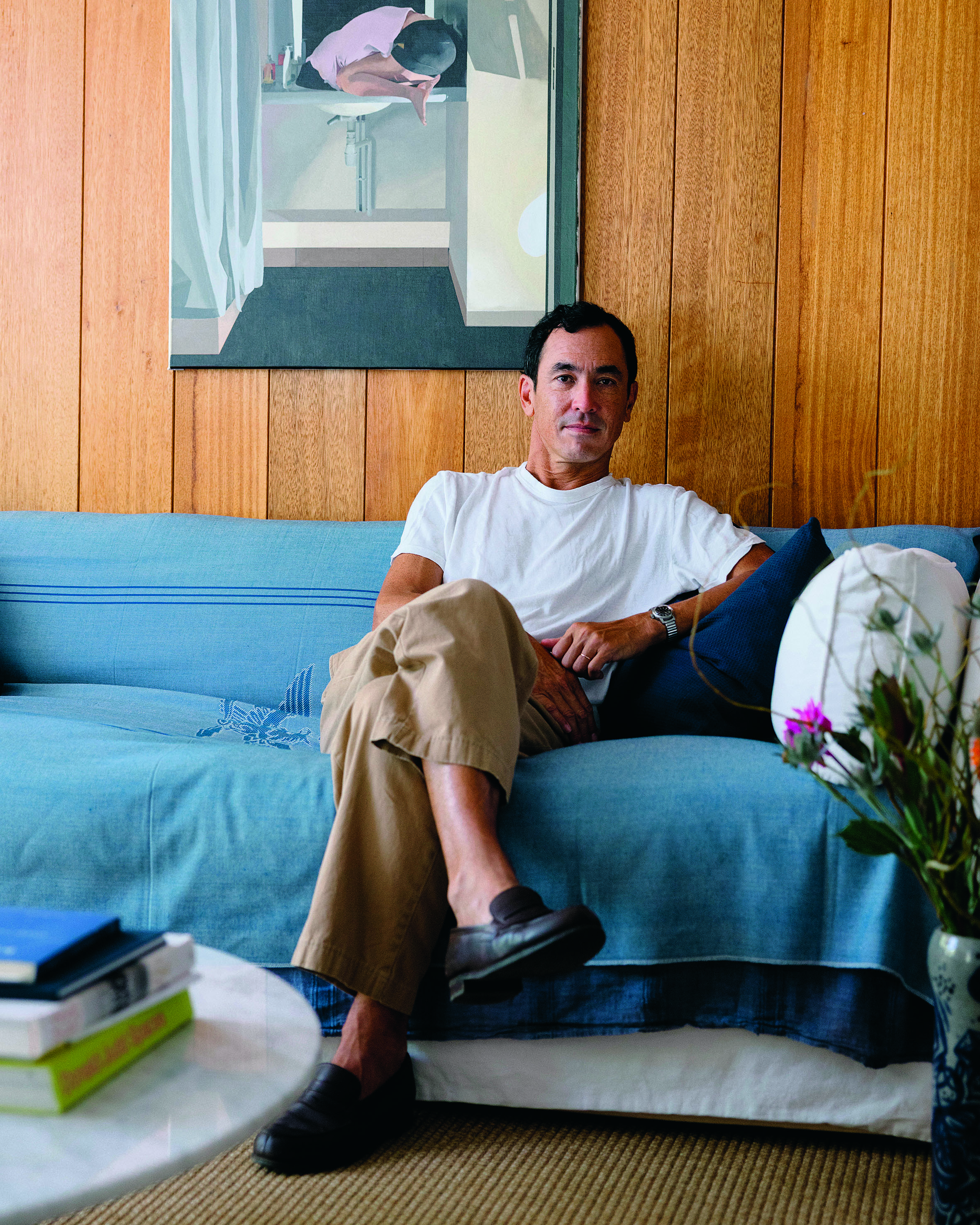
‘Ranch houses have all the qualities of a modernist home’: Geoff McFetridge
From the street, a short walkway and a series of steps lead to an ivy-covered brick façade with large windows. Stepping inside, past the woodpecker, another trinket catches my eye: a small Nordic plaque with a hand-painted sailor on it above a series of hooks for the family’s house and car keys. “This is an old neighbourhood and when people pass away they have estate sales,” says McFetridge, explaining that the plaque was discovered in one of them.
The house itself was built in the 1950s and designed by Vick Santochi, a little-known architect who worked in the studio of Rudolph Schindler, the Austrian-American architect who was a master of California’s modernist movement. Constructed on one level, the three-bedroom home is a quintessential “ranch house” – a style characterised by a long, low-slung shape and an open internal layout. It’s a style McFetridge loves. “From the outside, they look like generic houses, but ranch houses have all the qualities of a modernist home with an open plan, without being austere,” he says. “They are non-intellectual modernism, homey, with low ceilings and lots of glass.” Twenty years ago, McFetridge and DeVincentis’s friend, the architect Barbara Bestor, did a remodel of the kitchen and primary bathroom. But otherwise they have left the bones of the building intact.
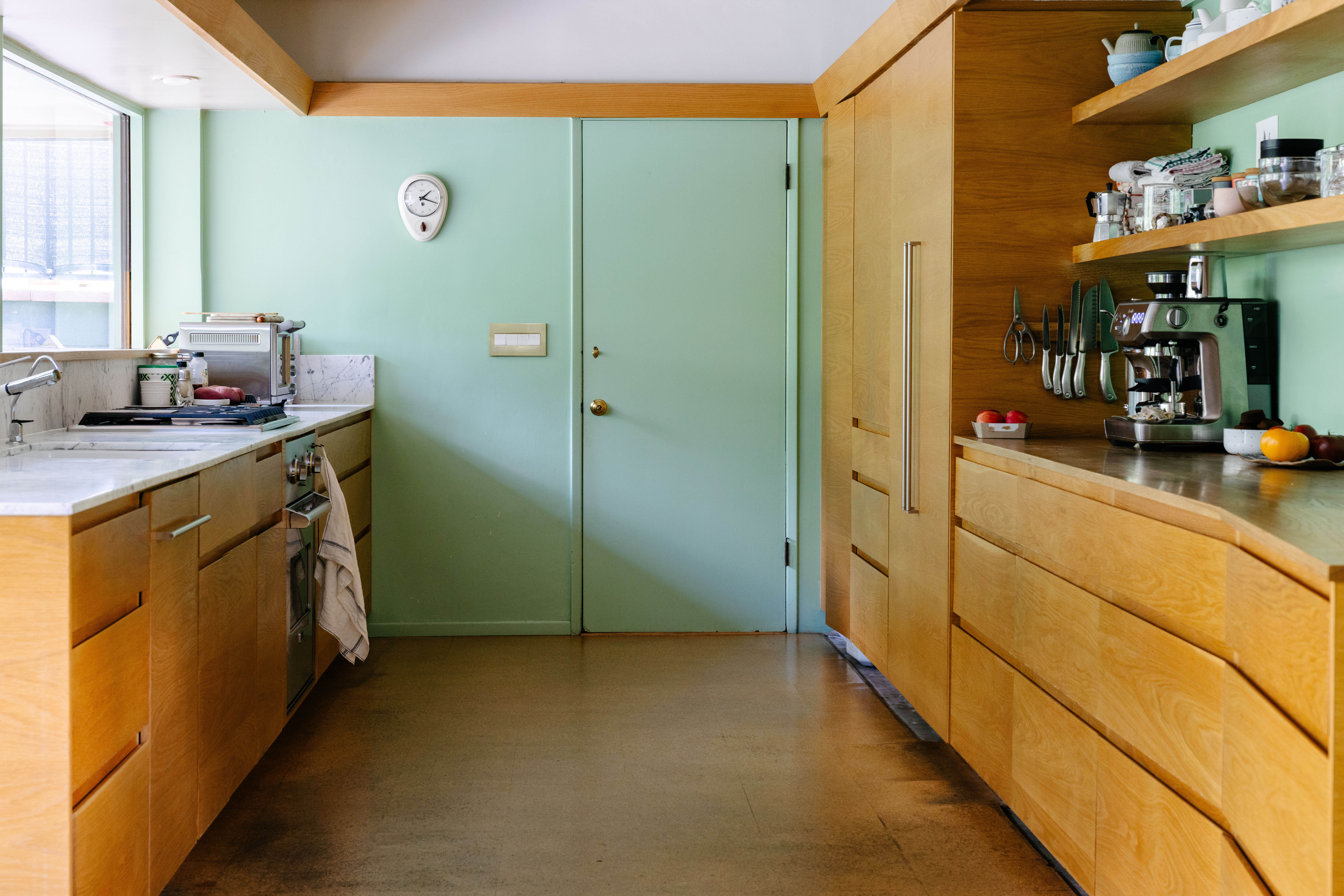
The kitchen and main bathrroom have been remodelled – otherwise the bones of the building have been left intact
The artworks on display run the gamut. “We have a combination of children’s art, friends’ work, some of our own,” McFetridge says. There’s an eye-catching Cheryl Dunn photograph of skateboarders in Cuba (skate culture was McFetridge’s gateway into graphic design as a teenager growing up in suburban Calgary, Canada), as well as pieces by artists Jenny Rask and Chris Johanson. In the entrance hallway is a black-and-white abstract work by the artist Freegums. A standout piece is an acrylic canvas of a young girl seemingly trying to flush herself down a sink drain. “It was done last year by our daughter,” McFetridge says, beaming. (She is studying art at Oberlin College in Ohio.) “Just an incredible painting.” There are also several paintings by McFetridge himself, including a number of works featuring horses and hands – a nod to the fact that both his daughters are passionate equestrians.
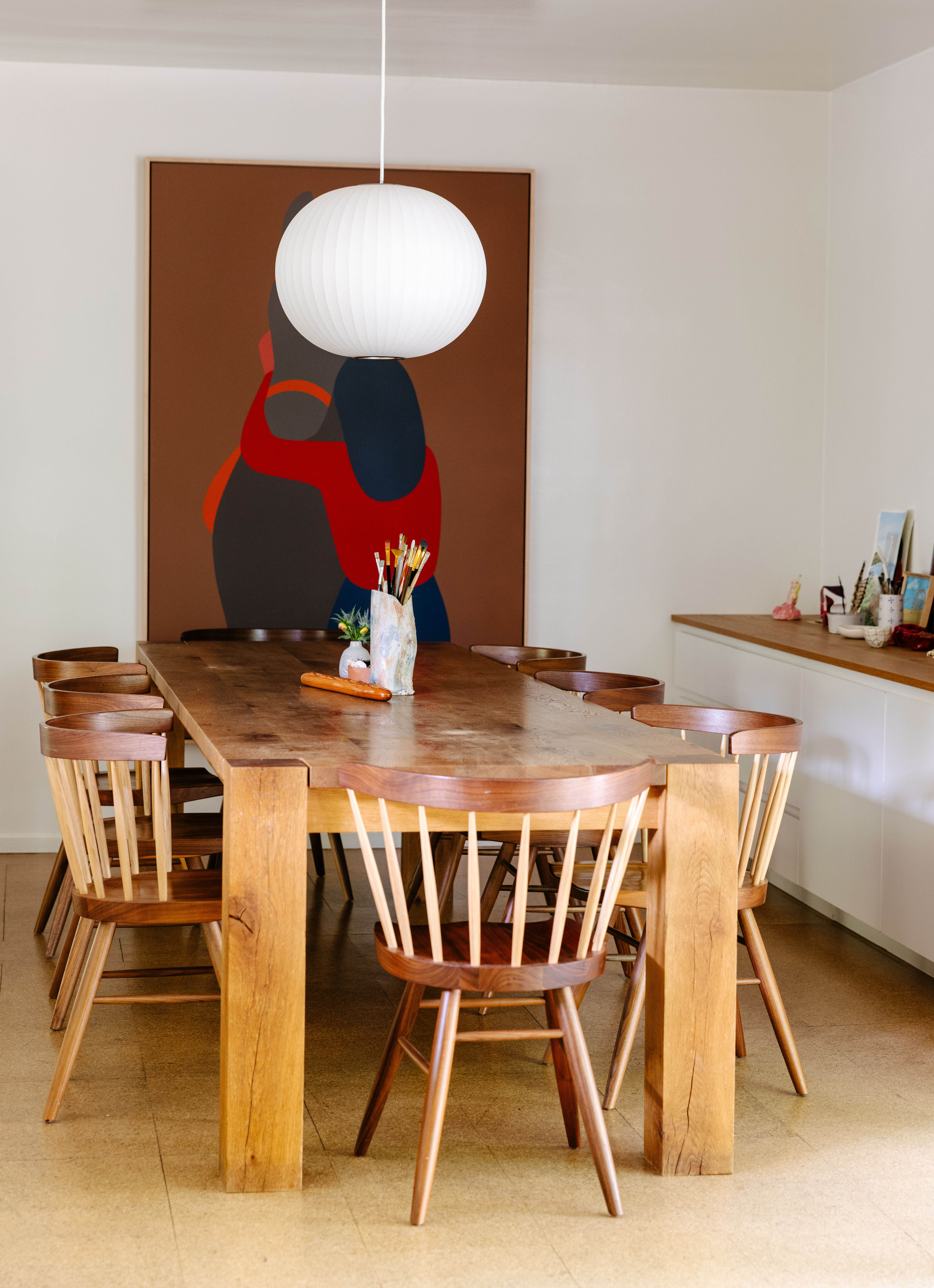
The dining area is dominated by a long, sturdy dining table by the German brand e15
Otherwise, though, there isn’t really any sign that a prolific artist lives here – all of McFetridge’s work happens at his studio in nearby Atwater. “I wouldn’t want to live in my studio,” he says. “For some it’s the dream: to wake up, make art, go to bed. I’d go nuts.” While he does occasionally bring projects home to ask his family’s opinion (“It’s an important part of my process, especially with Sarah”), he’s generally happy to keep family life and work apart. “When you’re an artist, you almost have two lives,” he says. “You’re developing as a human being and as an artist. I didn’t want these things to conflict with each other.”
McFetridge tries to stick to a regular nine-to-five workday. When he returns home, the living room is his favourite landing spot. A white George Nelson Bubble pendant lamp casts a warm glow on the oak wall panelling, and there are a couple of white-upholstered armchairs in front of a brick wood-burning fireplace. A pair of woollen slippers from Greece are perched on the hearth as if awaiting his arrival. One entire wall is given over to a wooden bookcase built by the artist, which is loaded with books, records, small horse figurines and toys. “I love this room,” he says. “It’s very peaceful. I like lying on the sofa, listening to music or reading.” As the seasons change and the grass outside grows high, the large windows, a cornerstone of a midcentury home, frame the view on to nature.
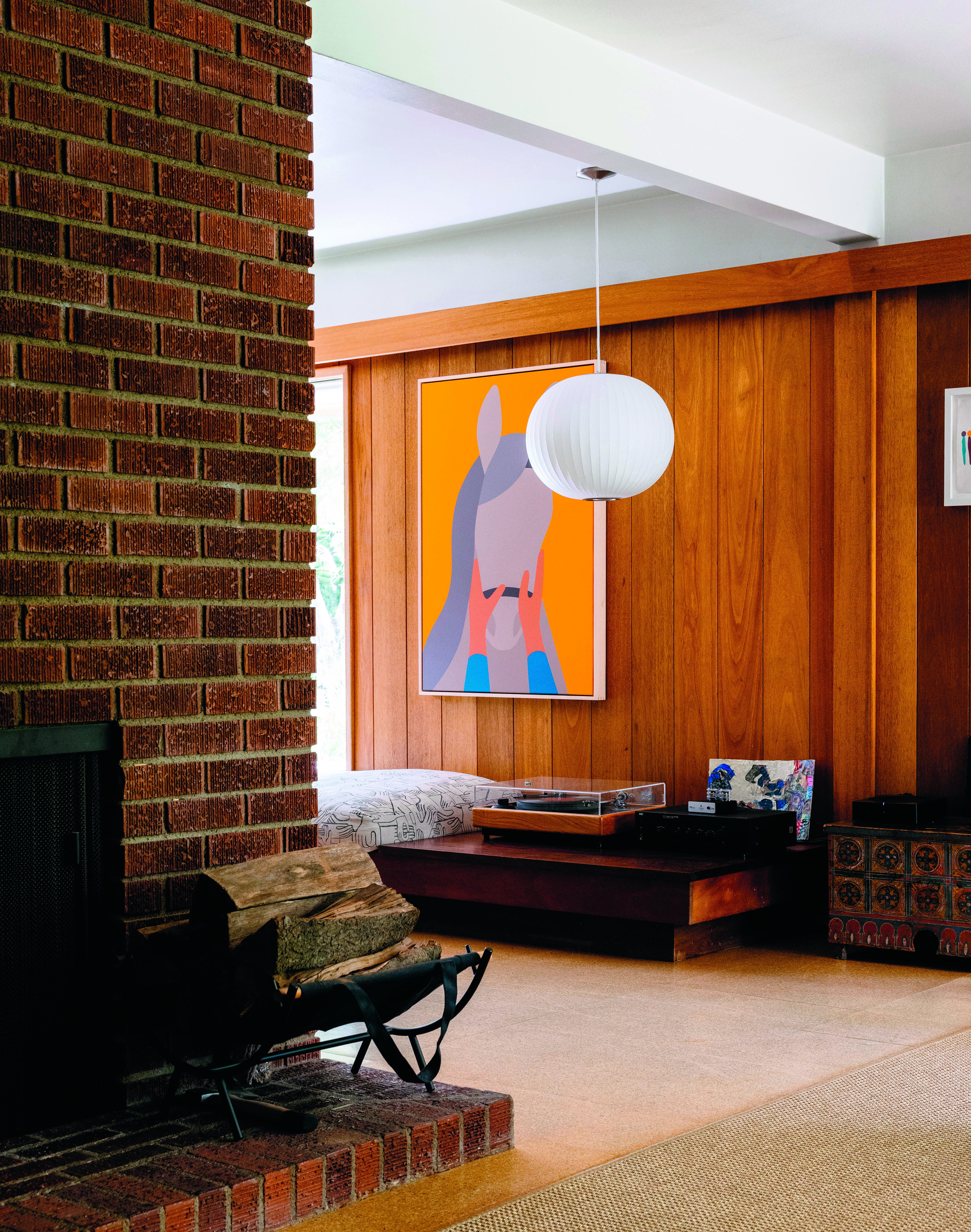
‘I love this room,’ says McFetridge. ‘It’s very peaceful. I like lying on the sofa, listening to music or reading.’
The dining area, next to the doors to the back garden, is dominated by a long, sturdy dining table by the German brand e15 (named after the London postcode of its first UK workshop). It holds various pieces of pottery, including a vase full of paint brushes and a bowl containing shells from family trips to Greece and Belize. But underneath is where the real discovery lies. “There are drawings on the bottom of the table,” McFetridge says. “It’s for kids to look at when they’re bored at dinner.”
Surrounding the table are a set of chairs by George Nakashima. “When you look at these chairs, they could be Windsor or spindle back with a western feel, but everything about them is Japanese – the detail and woodworking. It’s the perfect chair.” The family gathers here most mornings for breakfast, and nightly at the table for homecooked vegetarian meals.
“A few times a year, I have to come home for dinner and then go back to the studio and work until late, mostly when I’m getting ready for a show,” says McFetridge. That’s the case right now – he has an upcoming show at Gallery Target in Tokyo, which represents him in Japan, in conjunction with the high-end shopping mall Parco, where he had his first show 25 years ago. It’s a full-circle moment. “I’m against dead ends,” he says. “I’m always thinking about the future. But it’s important for me to make work that’s the best I can do in this moment. ‘Be here now,’” he says with a smile. “That’s my motto.”
